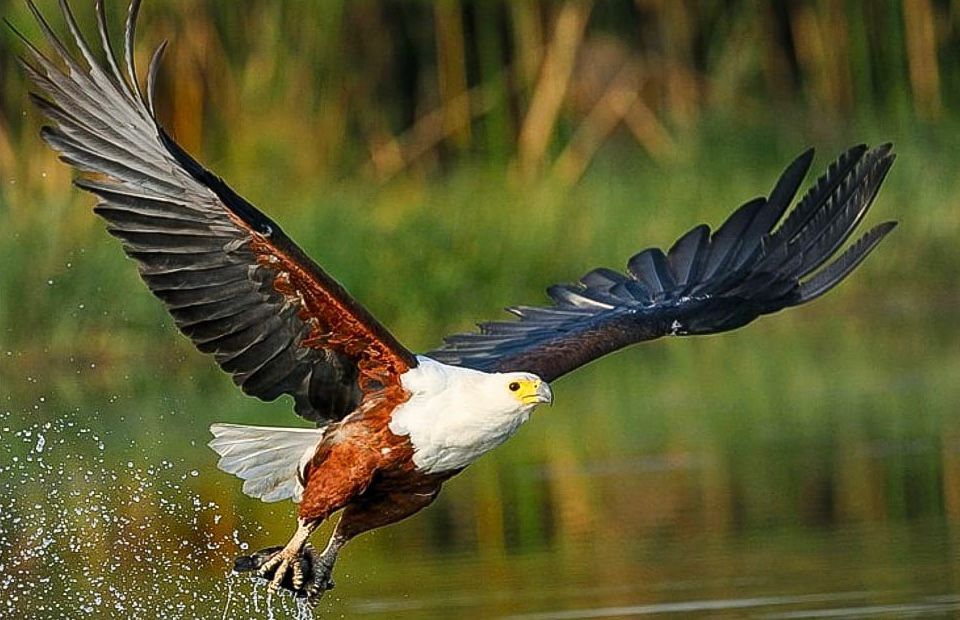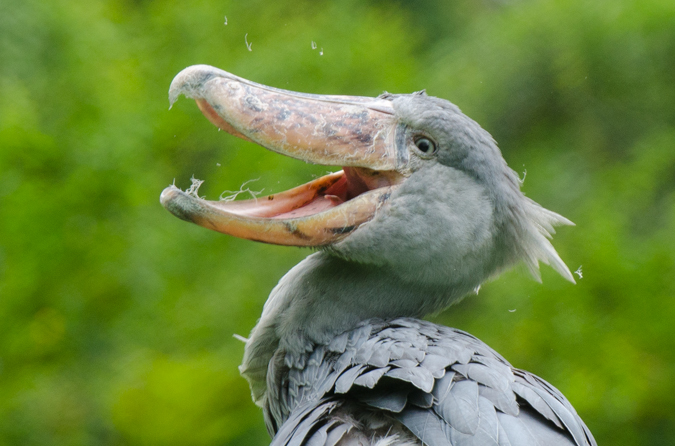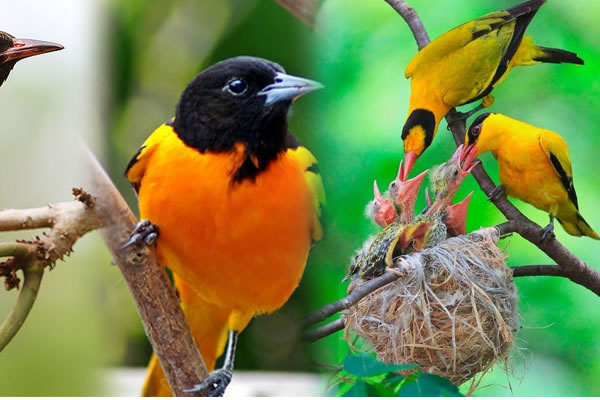Birdwatching in Uganda: Top 7 Birding Hotspots & Iconic Species
Birdwatching in Uganda: Nestled in the heart of East Africa, Uganda is a birdwatcher’s dream destination, often hailed as one of the best places for birding on the continent.
Known as the “Pearl of Africa,” Uganda boasts an extraordinary variety of ecosystems, from misty rainforests and sprawling savannahs to shimmering wetlands and rugged mountains.
This diversity creates a haven for over 1,090 bird species—nearly half of Africa’s total bird population—making it a must-visit for ornithologists and nature lovers alike.
Whether you’re chasing the elusive Shoebill stork or marveling at the vibrant Great Blue Turaco, Uganda’s rich avian tapestry and accessible birding sites promise an unforgettable adventure.
Why Birdwatching in Uganda?
Unparalleled Bird Diversity
Uganda’s bird diversity is unmatched in Africa, with over 1,090 species recorded, representing about 10% of the world’s known bird species.
This richness stems from the country’s unique position at the crossroads of East African savannahs, Central African rainforests, and the Albertine Rift, a biodiversity hotspot.
Unlike larger countries like Kenya or Tanzania, Uganda’s compact size means birders can explore varied habitats within short distances, making it ideal for multi-species sightings in a single trip.
Year-Round Birding Opportunities
Uganda’s equatorial climate ensures birdwatching is possible year-round. The country’s stable weather, combined with diverse habitats, supports both resident and migratory birds. From forest-dwelling endemics to Palearctic migrants, there’s always something to see, no matter the season.
The Iconic Shoebill Stork
No bird epitomizes Uganda’s birding allure like the Shoebill stork. This prehistoric-looking bird, with its massive bill and piercing eyes, is a bucket-list species for birders worldwide.
Found in wetlands like Mabamba Swamp, the Shoebill is a rare and unforgettable sight, cementing Uganda’s status as a premier birding destination.

Top Birdwatching Destinations in Uganda
Mabamba Swamp
Located near Entebbe, Mabamba Swamp is a world-famous wetland and the best place to spot the Shoebill stork. This Ramsar site is a haven for waterbirds, including the African Jacana, Malachite Kingfisher, and Long-toed Lapwing. Guided canoe tours through the swamp’s papyrus channels offer intimate encounters with these species, making it a must-visit for any birding itinerary.
Bwindi Impenetrable National Park
A UNESCO World Heritage Site, Bwindi is renowned for its gorilla trekking but is equally a birding paradise. The park hosts over 350 bird species, including 23 Albertine Rift endemics like the African Green Broadbill and Shelley’s Crimsonwing. The dense forest trails, such as the Mubwindi Swamp trail, provide excellent opportunities for spotting rare forest birds.
Queen Elizabeth National Park
Spanning savannahs, wetlands, and the Kazinga Channel, Queen Elizabeth National Park is a biodiversity hotspot with over 600 bird species. The Kazinga Channel boat cruise is a highlight, offering sightings of waterbirds like the African Skimmer, Pink-backed Pelican, and African Fish Eagle. The park’s diverse habitats also attract savannah species like the Martial Eagle and Black-rumped Buttonquail.
Murchison Falls National Park
Uganda’s largest national park, Murchison Falls, offers a mix of riverine, savannah, and forest habitats, hosting over 450 bird species. The Nile Delta is a prime spot for the Shoebill, while the park’s woodlands attract the Red-throated Bee-eater and Abyssinian Ground Hornbill. Boat trips to the base of the falls provide stunning views and birding opportunities.
Semuliki National Park
Semuliki’s lowland rainforest, part of the Congo Basin ecosystem, is a treasure trove for Central African species. With over 400 bird species, including the Black-casqued Hornbill and Congo Serpent Eagle, it’s a hotspot for rare forest birds. The park’s hot springs and forest trails add to the allure for adventurous birders.
Kibale Forest National Park
Known for its chimpanzee trekking, Kibale Forest also boasts over 370 bird species. The Green-breasted Pitta, a secretive and highly sought-after species, is a major draw. Birders can also spot the African Grey Parrot and White-headed Wood Hoopoe while exploring the forest’s trails.

Rwenzori Mountains National Park
The Rwenzori Mountains, often called the “Mountains of the Moon,” offer high-altitude birding with species like the Rwenzori Turaco and Strange Weaver. With over 200 bird species, the park’s montane forests and alpine meadows provide a unique birding experience for those willing to trek its rugged trails.
Unique & Rare Birds to Spot in Uganda
Uganda’s birdlife is a blend of iconic and rare species, many of which are endemic to the Albertine Rift. Here are some highlights:
- Shoebill Stork: This enigmatic bird, found in wetlands like Mabamba and Murchison Falls, is a prehistoric marvel with a shoe-shaped bill.
- Great Blue Turaco: A vibrant, fruit-eating bird with a striking blue-green plumage, commonly seen in forest canopies.
- African Green Broadbill: A rare Albertine Rift endemic, this tiny bird is a gem for birders in Bwindi.
- Shelley’s Crimsonwing: One of the rarest finches, found in high-altitude forests like Bwindi and Rwenzori.
- African Fish Eagle: Uganda’s national emblem, its piercing call echoes along rivers and lakes.
The Albertine Rift, a biodiversity hotspot, is home to 34 endemic species, including the Handsome Francolin and Blue-headed Sunbird, making Uganda a critical destination for spotting these rare birds.

Best Time for Birdwatching in Uganda
Birdwatching in Uganda is viable year-round due to its equatorial climate, but timing can enhance your experience. The peak birding season is November to April, when migratory birds from Europe and North Africa arrive, boosting species diversity.
The dry seasons (June to August and December to February) are ideal for accessing forest trails and spotting birds in open habitats, as vegetation is less dense and roads are more navigable.
However, even the wet seasons (March to May and September to November) offer excellent birding, particularly for forest species, as lush greenery attracts active birdlife.
Birdwatching Tours & Safaris
Uganda offers a range of birding experiences, from short day tours to multi-day safaris tailored for avid birders. Day tours are perfect for targeting specific species, like the Shoebill in Mabamba Swamp.
Multi-day safaris, often lasting 7–14 days, cover multiple hotspots like Bwindi, Queen Elizabeth, and Semuliki, maximizing species counts.
Guided tours are highly recommended, as expert local guides know the best spots and can identify birds by call or behavior.At Uganda Wildlife Tours, we offer specialized birding tours with knowledgeable guides. Contact us today to book your birding safari in Uganda. For experienced birders, self-birding is possible with a good guidebook, such as Birds of East Africa by Stevenson and Fanshawe, but permits and local knowledge are essential.

Practical Travel Information
Permits & Fees
Most birding sites are within national parks, requiring entry fees. For example, Queen Elizabeth and Murchison Falls charge around $40 per person for foreigners, while Bwindi costs $40–$150 depending on activities. We arrange all the neccesary permits making sure you have an hassle free enjoyable experience.
Birding Gear
Essential gear includes binoculars (8×42 or 10×42 recommended), a camera with a zoom lens (300mm+), and a field guide like Birds of East Africa. Waterproof clothing, sturdy hiking boots, and insect repellent are crucial for forest and wetland environments.
Accommodation
Options range from budget campsites to luxury lodges. Near Mabamba Swamp, Nkima Forest Lodge offers affordable stays. In Bwindi, Buhoma Lodge provides comfort close to birding trails. For Queen Elizabeth, Mweya Safari Lodge offers stunning views and proximity to the Kazinga Channel.
Conservation & Responsible Birdwatching
Birdwatching in Uganda supports conservation and local communities through eco-tourism. Revenue from park fees funds habitat protection and anti-poaching efforts, preserving critical ecosystems like Mabamba Swamp and Bwindi.
Responsible birding practices, such as maintaining a respectful distance from nests and avoiding playback overuse, ensure minimal disturbance to wildlife.
By choosing local guides and eco-friendly lodges, birders contribute to sustainable tourism that benefits Uganda’s people and its biodiversity.
Conclusion
Uganda’s unparalleled bird diversity, iconic species like the Shoebill stork, and accessible birding hotspots make it a top destination for birdwatchers worldwide.
From the misty forests of Bwindi to the wetlands of Mabamba, every corner of the country offers a chance to witness nature’s avian wonders.
Plan your Uganda birdwatching safari today and experience the thrill of spotting rare species in one of Africa’s most vibrant ecosystems.
FAQ: Birdwatching in Uganda
What is the best place for birdwatching in Uganda?
Mabamba Swamp is the top spot for spotting the Shoebill stork, while Bwindi Impenetrable National Park is ideal for Albertine Rift endemics.
How many bird species are in Uganda?
Uganda is home to over 1,090 bird species, nearly half of Africa’s total.
Can I see the Shoebill stork in Uganda?
Yes, Mabamba Swamp and Murchison Falls National Park are prime locations for spotting the Shoebill.
What is the best month for birding in Uganda?
November to April is peak season due to migratory birds, while June to August and December to February offer easier access during dry seasons.
Top 10 Birds to See in Uganda
|
Bird |
Where to Spot |
Why It’s Special |
|
Shoebill Stork |
Mabamba Swamp, Murchison Falls |
Prehistoric-looking, rare wetland species |
|
Great Blue Turaco |
Kibale, Bwindi |
Vibrant blue-green plumage |
|
African Green Broadbill |
Bwindi Impenetrable |
Rare Albertine Rift endemic |
|
Shelley’s Crimsonwing |
Bwindi, Rwenzori |
Elusive, colorful finch |
|
African Fish Eagle |
Queen Elizabeth, Murchison Falls |
Iconic raptor, Uganda’s national emblem |
|
Rwenzori Turaco |
Rwenzori Mountains |
Stunning high-altitude species |
|
Green-breasted Pitta |
Kibale Forest |
Secretive, vibrant forest bird |
|
Black-casqued Hornbill |
Semuliki National Park |
Large, striking Central African species |
|
Red-throated Bee-eater |
Murchison Falls |
Colorful, agile insectivore |
|
Malachite Kingfisher |
Mabamba Swamp, Kazinga Channel |
Tiny, jewel-like waterbird |
